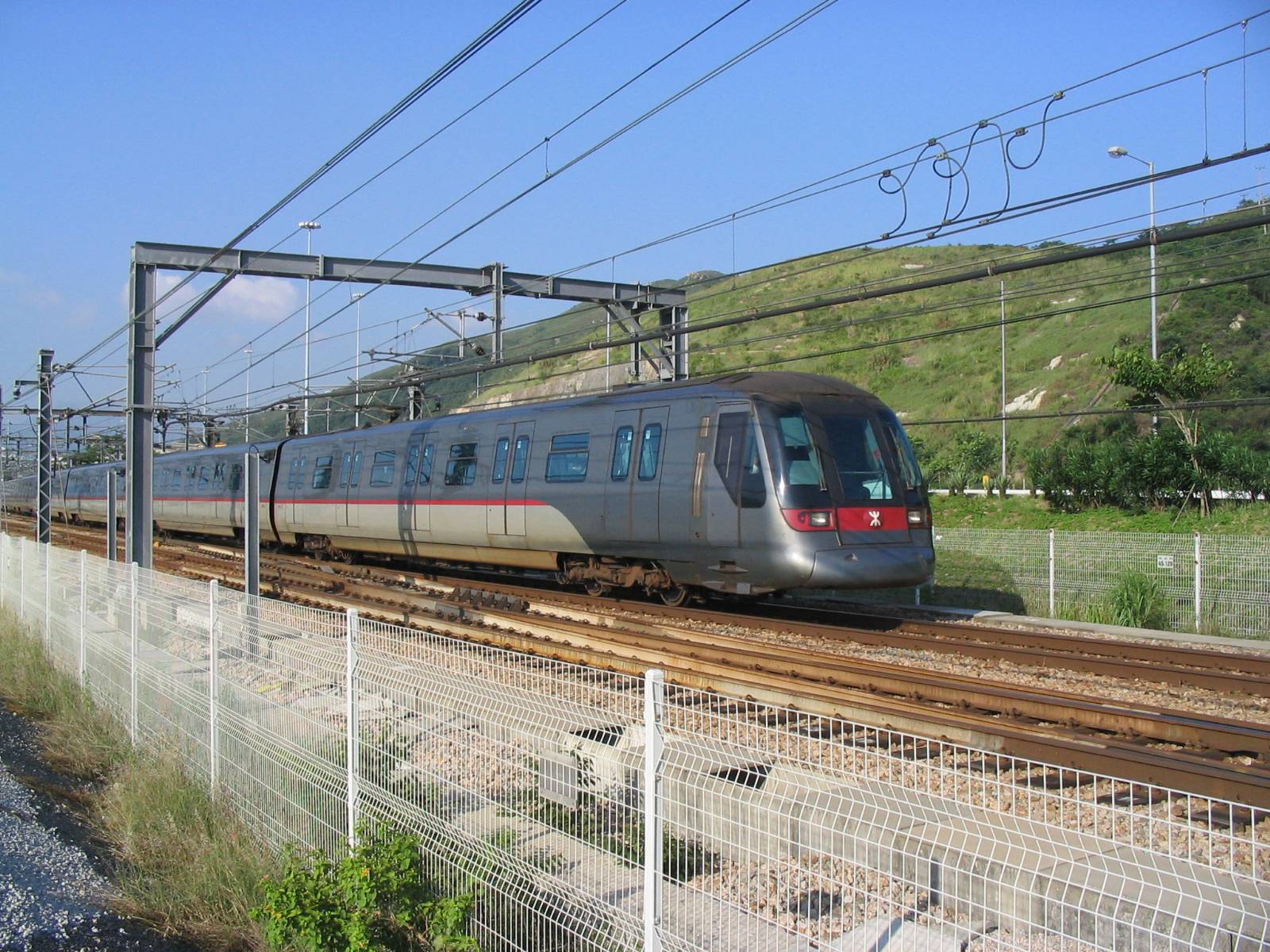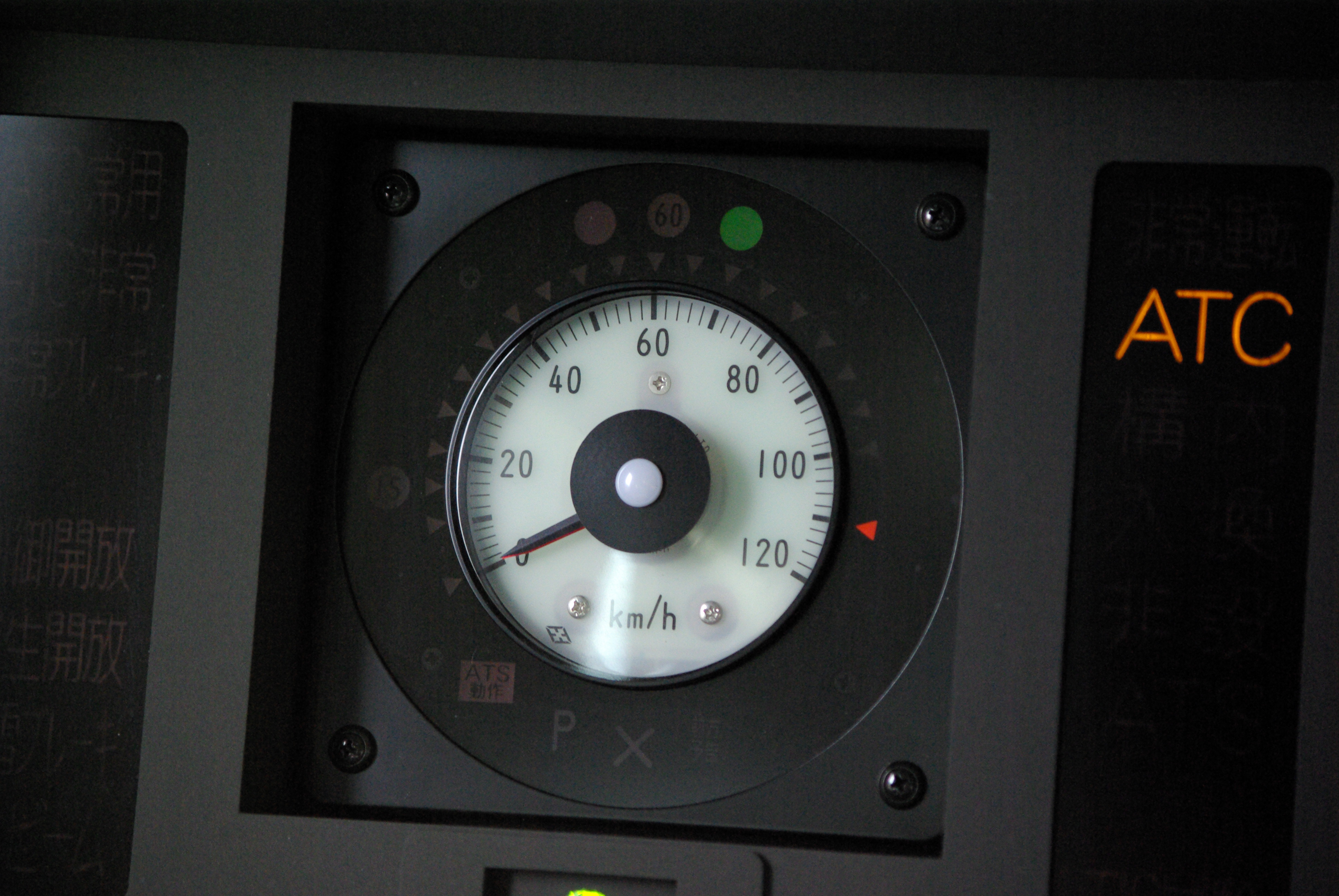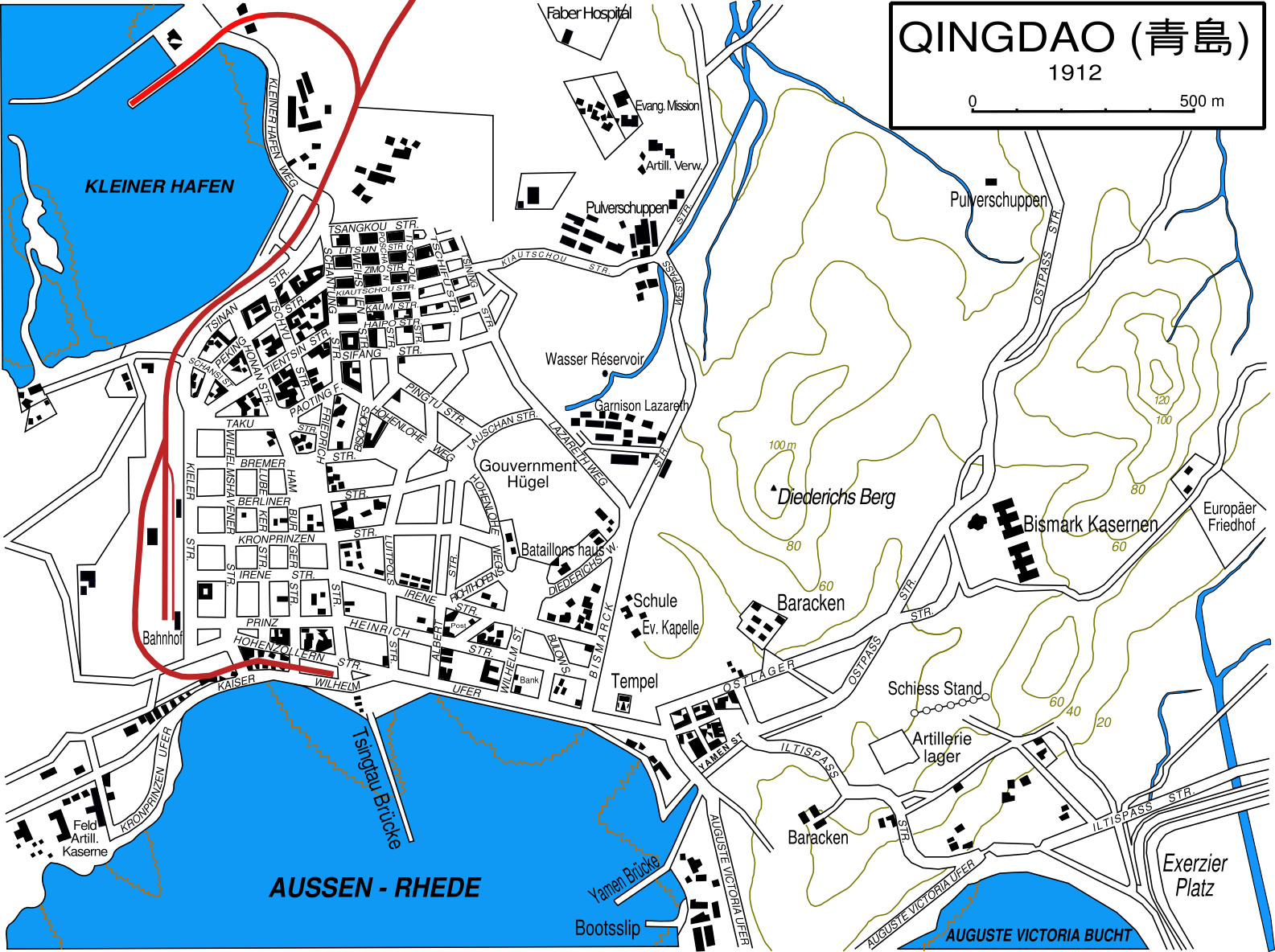|
CRRC Qingdao Sifang CR151
The CRRC Qingdao Sifang CR151 is a type of electric multiple unit to be built for the Cross Island MRT line, Cross Island Line of Singapore's Mass Rapid Transit (Singapore), Mass Rapid Transit (MRT) system. The contract was awarded to CRRC Sifang, a consortium of CRRC Qingdao Sifang, CRRC Qingdao Sifang Company and Singapore CRRC Sifang Railway Vehicles Service, and as of June 2023 the Land Transport Authority, Land Transport Authority (LTA) has purchased 44 six-car trains. They will be delivered from 2027, before the opening of the line's first phase in 2030. Tender The tender for trains under the contract CR151 was closed on 23 September 2022 with four bids. The Land Transport Authority, LTA has shortlisted all of them and the results has been released. The contract includes the option of purchasing up to 11 more trains. The tender results were published on 14 June 2023 on the Singapore government's GeBIZ platform: Features Each train car will have 10 doors per car (5 on each ... [...More Info...] [...Related Items...] OR: [Wikipedia] [Google] [Baidu] |
CRRC Qingdao Sifang
CRRC Qingdao Sifang Co., Ltd. () is a Chinese rolling stock manufacturer based in Qingdao, Shandong province. Founded in 1900 during the Kiautschou Bay concession, German occupation, Qingdao Sifang is one of the oldest rolling stock manufacturers in China. History Qing Dynasty and the Republic of China Era Founding of the Syfang General Repair Works Following the Juye Incident, the German Empire, German army landed at Tsingtao in 1897. In 1898, the Qing dynasty, Qing government signed the Kiautschou Bay concession, Jiao'ao Concession Treaty with Germany, which made Tsingtao a German colony. This treaty also granted the German government the right to build the Jiaoji Railway and develop the mineral deposits along the route. Kaiser Wilhelm II was determined to make Tsingtao a "model colony" and a bridgehead for the German Army (German Empire), German army in the Far East. As a result, German authorities built a number of factories in Tsingtao between 1900 and 1910. In October 190 ... [...More Info...] [...Related Items...] OR: [Wikipedia] [Google] [Baidu] |
Automatic Train Operation
Automatic train operation (ATO) is a method of operating trains automatically where the driver is not required or is required for supervision at most. Alternatively, ATO can be defined as a subsystem within the automatic train control, which performs any or all of functions like programmed stopping, speed adjusting, door operation, and similar otherwise assigned to the train operator. The degree of automation is indicated by the Grade of Automation (GoA), up to GoA4 in which the train is automatically controlled without any staff on board. On most systems for lower grades of automation up to GoA2, there is a driver present to mitigate risks associated with failures or emergencies. Driverless automation is primarily used on automated guideway transit systems where it is easier to ensure the safety due to isolated tracks. Fully automated trains for mainline railways are an area of research. The first driverless experiments in the history of train automation date back to 1920 ... [...More Info...] [...Related Items...] OR: [Wikipedia] [Google] [Baidu] |
Mass Rapid Transit (Singapore) Rolling Stock
The rolling stock on Singapore's Mass Rapid Transit (MRT) and Light Rail Transit (LRT) includes several models of electric multiple units and people mover systems respectively. They are primarily operated by SBS Transit and SMRT Trains. Mass Rapid Transit (MRT) rolling stock Current Future Retired Light Rail Transit (LRT) rolling stock Current Future Work trains SMRT Trains was known to use the following vehicles for maintenance of way as of 2015: * In addition, SBS Transit has used a two-car MFV supplied by a joint venture between Plasser and Theurer and Speno and a railgrinder from Harsco and the Land Transport Authority is known to have procured multi-function vehicles and railgrinders from MERMEC of Italy and Harsco respectively for the Downtown Line and Thomson–East Coast Line, general maintenance vehicles for the Downtown Line from Gemac Engineering Machinery, as well as Bo-Bo battery-electric locomotives from CRRC Zhuzhou Locomotive. Engineering trains a ... [...More Info...] [...Related Items...] OR: [Wikipedia] [Google] [Baidu] |
Hyundai Rotem
Hyundai Rotem Company, often referred to as Hyundai Rotem (), is a South Korean manufacturer of railway rolling stock, railway signalling, defense products and plant equipment. It is a member of Hyundai Motor Group and has presence in more than 50 countries worldwide. As of 2023, Hyundai Rotem has more than 3,900 employees. History As part of the Government of South Korea, government-led restructuring in the wake of 1997 Asian financial crisis, Korea Rolling Stock Corporation (KOROS, ) was founded on 1 July 1999 as a result of the merger between three major rolling stock divisions of Hanjin Heavy Industries, Daewoo Heavy Industries, and Hyundai Mobis, Hyundai Precision Industry. In 2000, Hyundai Precision Industry sold its defence and plant businesses to KOROS, effectively making KOROS an affiliate company of Hyundai Motor Company. Hyundai Precision Industry was renamed as Hyundai Mobis in the same year. In August 2001, in an aftermath of Daewoo Group's dissolution, Daewoo He ... [...More Info...] [...Related Items...] OR: [Wikipedia] [Google] [Baidu] |
Construcciones Y Auxiliar De Ferrocarriles
Construcciones y Auxiliar de Ferrocarriles (Grupo CAF, ) is a Spanish publicly listed company which manufactures railway vehicles and equipment and buses through its Solaris Bus & Coach subsidiary. It is based in Beasain, Basque Autonomous Community, Spain. Equipment manufactured by Grupo CAF includes light rail vehicles, rapid transit trains, railroad cars and locomotives, as well as variable gauge axles that can be fitted on any existing truck or bogie. Over the 20 years from the early 1990s, CAF benefited from the rail investment boom in its home market in Spain to become a world player with a broad technical capability, able to manufacture almost any type of rail vehicle. CAF has supplied railway rolling stock to a number of major public transport, urban transit operators around Europe, the US, South America, East Asia, India, Australia and North Africa. History ''CAF'' was an acronym for the earlier name of ''Compañía Auxiliar de Ferrocarriles'', as well as for ''Constr ... [...More Info...] [...Related Items...] OR: [Wikipedia] [Google] [Baidu] |
Alstom
Alstom SA () is a French multinational rolling stock manufacturer which operates worldwide in rail transport markets. It is active in the fields of passenger transportation, signaling, and locomotives, producing high-speed, suburban, regional and urban trains along with trams. The company and its name (originally spelled Alsthom) was formed by a merger between the electric engineering division of Société Alsacienne de Constructions Mécaniques (Als) and Compagnie Française Thomson-Houston (thom) in 1928. Significant acquisitions later included the Constructions Électriques de France (1932), shipbuilder Chantiers de l'Atlantique (1976), and parts of ACEC (late 1980s). A merger with parts of the British General Electric Company formed GEC Alsthom in 1989. Throughout the 1990s, the company expanded its holdings in the rail sector, acquiring German rolling stock manufacturer Linke-Hofmann-Busch and Italian rail signaling specialist Sasib Railways. In 1998, GEC Alsthom was ... [...More Info...] [...Related Items...] OR: [Wikipedia] [Google] [Baidu] |
Land Transport Authority
The Land Transport Authority (LTA) is a Statutory boards of the Singapore Government, statutory board under the Ministry of Transport (Singapore), Ministry of Transport of the Government of Singapore. History Incorporation The Land Transport Authority (LTA) was established on 1 September 1995 and was formed by the merger of various public sector entities: the Registry of Vehicles, Mass Rapid Transit Corporation, Roads & Transportation Division of the CPG Corporation, Public Works Department and Land Transportation Division of the former Ministry of Communications. 1996 Land Transport White Paper On 2 January 1996, the Land Transport Authority published the 1996 Land Transport White Paper, titled "A World Class Land Transport System". It outlined the government plans. Changes to existing schemes were proposed along with schemes were introduced across various transport sectors. This included the Electronic Road Pricing (ERP) scheme, which eventually become ubiquitous in the city s ... [...More Info...] [...Related Items...] OR: [Wikipedia] [Google] [Baidu] |
Mass Rapid Transit (Singapore)
The Mass Rapid Transit system, locally known by the Acronym, initialism MRT, is a rapid transit system in Singapore and the island country's principal mode of Rail transport in Singapore, railway transportation. After two decades of planning the system commenced operations in November 1987 with an initial stretch consisting of five stations. The network has since grown to span the length and breadth of the country's Singapore Island, main island – with the exception of the Central Catchment Nature Reserve, forested core and the rural Lim Chu Kang, northwestern region – in accordance with Singapore's aim of developing a comprehensive rail network as the backbone of the country's Transport in Singapore, public transportation system,Singapore's heavy rail network is composed of three distinct systems. Two of the three are rapid transit networks, chiefly a) the MRT system, which falls entirely within the city-state and forms the core of the network, and b) the two-station cross- ... [...More Info...] [...Related Items...] OR: [Wikipedia] [Google] [Baidu] |
Electric Multiple Unit
An electric multiple unit or EMU is a multiple-unit train consisting of self-propelled carriages using electricity as the motive power. An EMU requires no separate locomotive, as electric traction motors are incorporated within one or a number of the carriages. An EMU is usually formed of two or more semi-permanently coupled carriages. However, electrically powered single-unit railcars are also generally classed as EMUs. The vast majority of EMUs are passenger trains but versions also exist for carrying mail. EMUs are popular on intercity, commuter, and suburban rail networks around the world due to their fast acceleration and pollution-free operation, and are used on most rapid-transit systems. Being quieter than diesel multiple units (DMUs) and locomotive-hauled trains, EMUs can operate later at night and more frequently without disturbing nearby residents. In addition, tunnel design for EMU trains is simpler as no provision is needed for exhausting fumes, although retrofitting ... [...More Info...] [...Related Items...] OR: [Wikipedia] [Google] [Baidu] |
Automatic Train Control
Automatic train control (ATC) is a general class of train protection systems for railways that involves a speed control mechanism in response to external inputs. For example, a system could effect an emergency brake application if the driver does not react to a signal at danger. ATC systems tend to integrate various cab signalling technologies and they use more granular deceleration patterns in lieu of the rigid stops encountered with the older automatic train stop (ATS) technology. ATC can also be used with automatic train operation (ATO) and is usually considered to be the safety-critical part of a railway system. There have been numerous different safety systems referred to as "automatic train control" over time. The first experimental apparatus was installed on the Henley branch line in January 1906 by the Great Western Railway, although it would now be referred to as an automatic warning system (AWS) because the driver retained full command of braking. The term is especi ... [...More Info...] [...Related Items...] OR: [Wikipedia] [Google] [Baidu] |
Qingdao
Qingdao, Mandarin: , (Qingdao Mandarin: t͡ɕʰiŋ˧˩ tɒ˥) is a prefecture-level city in the eastern Shandong Province of China. Located on China's Yellow Sea coast, Qingdao was long an important fortress. In 1897, the city was ceded to Germany. For the Germans Qingdao (Tsingtau) was a strategic trade center, port and base for its East Asia Squadron, allowing the German navy to project dominance in the Pacific. In 1914, following the outbreak of World War I, Japan occupied the city and the surrounding province during the Siege of Tsingtao. In 1915, China agreed to recognize Japan's special position in the territory through what became known as the Twenty-One Demands. In 1918, the Chinese government, under the control of the warlord Duan Qirui, secretly agreed to Japanese terms in exchange for a loan. Following the First World War, during the Paris Peace Conference, Japan secured agreements with the Allied powers to recognize its claim to the areas in Shandong, which in ... [...More Info...] [...Related Items...] OR: [Wikipedia] [Google] [Baidu] |
Communications-based Train Control
Communications-based train control (CBTC) is a railway signaling system that uses telecommunications between the train and track equipment for traffic management and infrastructure control. CBTC allows a train's position to be known more accurately than with traditional signaling systems. This can make railway traffic management safer and more efficient. Rapid transit systems (and other railway systems) are able to reduce headways while maintaining or even improving safety. A CBTC system is a "continuous, automatic train control system utilizing high-resolution train location determination, independent from track circuits; continuous, high-capacity, bidirectional train-to-wayside data communications; and trainborne and wayside processors capable of implementing automatic train protection (ATP) functions, as well as optional automatic train operation (ATO) and automatic train supervision (ATS) functions," as defined in the IEEE 1474 standard.1474.1–1999 – IEEE Standard fo ... [...More Info...] [...Related Items...] OR: [Wikipedia] [Google] [Baidu] |








